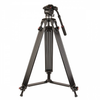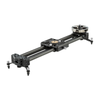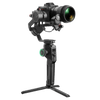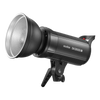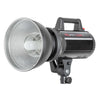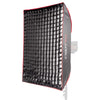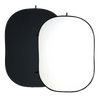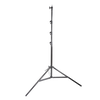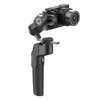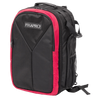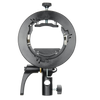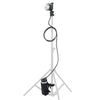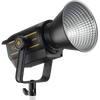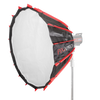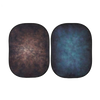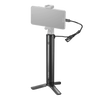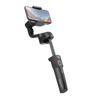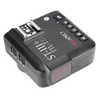Here's Why You Should Use LED Lighting at Your Photography Studio
As a professional photographer, you want to do everything that you can to capture the perfect shot. From shooting at odd hours and executing creative angles to testing out different props and locations, a lot of effort goes into clicking the perfect image. One of the most important factors involved in this tedious but worthwhile process is using the right type of lighting equipment.
Enter: LED lighting. This isn’t a new concept for photographers, but it still has the photography fraternity divided. Despite the many advantages of LED lighting, many photographers stick to conventional lighting forms. If you’re one of these photographers—or, if you’re looking to experiment and explore new options—this blog is for you.
Here are a few reasons why you should consider including LED lighting in your photography kit
LED Lighting is Available in a Variety of Colours
One of the biggest advantages of LED lighting is that it’s available in several colours and can be used to capture varying levels of colour intensity. When you shoot under LED lighting, your device will be able to capture the colours more accurately. As a result, you don’t have to spend a lot of time editing your images or footage after the shoot. Instead, you can simply adjust your camera settings and opt for bright or dim LED lighting as per your needs.
Typically, LED lighting is available in either tungsten balance or daylight.
 |
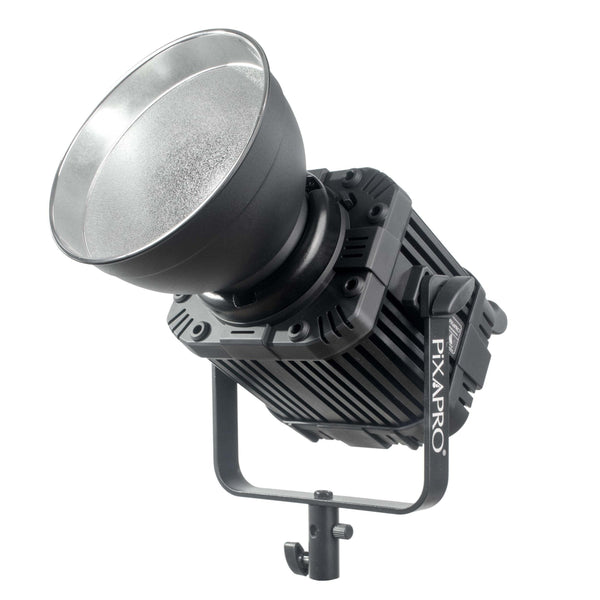 |
LED200B MKIII Pro Bi-Colour LED Studio Light and LED200D MKIII Daylight Balanced LED Studio Light
You may not be able to tell the difference, but your camera will definitely detect the variation between the two lighting types. Using the right LED type of lighting can help you capture enhanced and realistic colours, saving you considerable post-processing efforts. You can also control the brightness level of the LED lights you use for optimal coverage.
A wide variation of RGB LED is also available at EssentialPhoto.
LED Lighting Is Long-Lasting & Uses Less Electricity
LED lighting is energy efficient and converts the majority of the energy consumed into light, as compared to standard tungsten lighting. This also means that LED lighting is long-lasting and can be used for extended periods. For instance, if you have a lengthy video-shoot scheduled, you can count on LED lighting to get you through the work without any issues.
Since LED lighting has a long life, you can continue using it for years without having to replace your equipment. Thus, not only do you get to reduce your electricity consumption when using the lighting equipment but you can also reduce the amount of waste you generate via your photography setup. Unlike tungsten lighting, your LED bulbs don’t need to be replaced soon and are environment-friendly.
LED Lighting Is Cooler & More Continuous
Have you ever been in a photography studio or location where it’s been uncomfortably hot because of the lighting being used on set? The heat emitted from conventional lights can become unbearable soon, creating a less-than-ideal environment.
Unlike tungsten lighting, LED light bulbs produce significantly less heat. They’re cooler running lights and can help keep the set temperature optimal without adding to the heat. This means that they’re cooler to touch and can be used for clipping on gels without burning them. LED lighting equipment can also be squeezed into spaces that would’ve been unsuitable for conventional lighting because of the heat generated by the latter. Furthermore, LED lighting doesn’t require a cool-down period post-shoot, allowing photographers to wrap up quickly and utilize their time more efficiently.
LED lighting is also more continuous. It’s more powerful than conventional lighting and doesn’t require power surges to operate. This allows it to capture higher-quality images.
Godox UL-60 Super Silent Fanless LED Video Light
LED Lighting Can Help You Transition From Photo to Video Flawlessly
It isn’t uncommon for professional photographers to both still photos and video footage during a shoot. With LED lighting equipment, transitioning from photo to video and vice versa becomes much easier. You can utilize your LED lighting kit to capture both kinds of visuals without needing extra gear or equipment.
Since continuous lighting is required for video work, LED lighting not only allows you to capture exquisite portraits but also lets you film the entire scene. With the right light placement, you can make the most of your simple lighting equipment without needing any fancy gear or additional items.
COB60D LED Light Twin Softbox Travel Kit
LED Lighting Allows You to Compose Your Shots More Accurately
Because LED lighting is continuous, you can assess how much light is needed for your shots. This means that you can adjust the lighting before you actually begin shooting and use just the amount of light needed. This is in contrast with conventional lighting that uses flashes and can’t be used for gauging the amount of light required.
When using an LED panel, you don’t have to spend time on trial and error to determine your lighting needs. Moreover, you can also safely put your LED panel close to your subject for the perfect shot without the risk of any discomfort or injury typically associated with the heat generated from lighting equipment.
More Light Modifiers Are Available for COB type
Often people find that there aren’t many modifiers available for LED panels. Fortunately, with improved technology, we now have COB available in different power range from 60W up to 500W. They comes with Bowens S fit, the most common fitting in the market, which means there are so much more options available such as Fresnel, optical snoot, gigantic 170cm softbox (to illuminate larger area), etc.
 |
 |
 |
For the budget range, 60W Daylite60D is a go-to option. Additionally, the 100W, 150W and 200W are also good options to choose from. Power is everything for certain shoots, and the amazing latest 350W and 500W models cover this as well.
Get in touch with us today at info@essentialphoto.co.uk for more details!







































